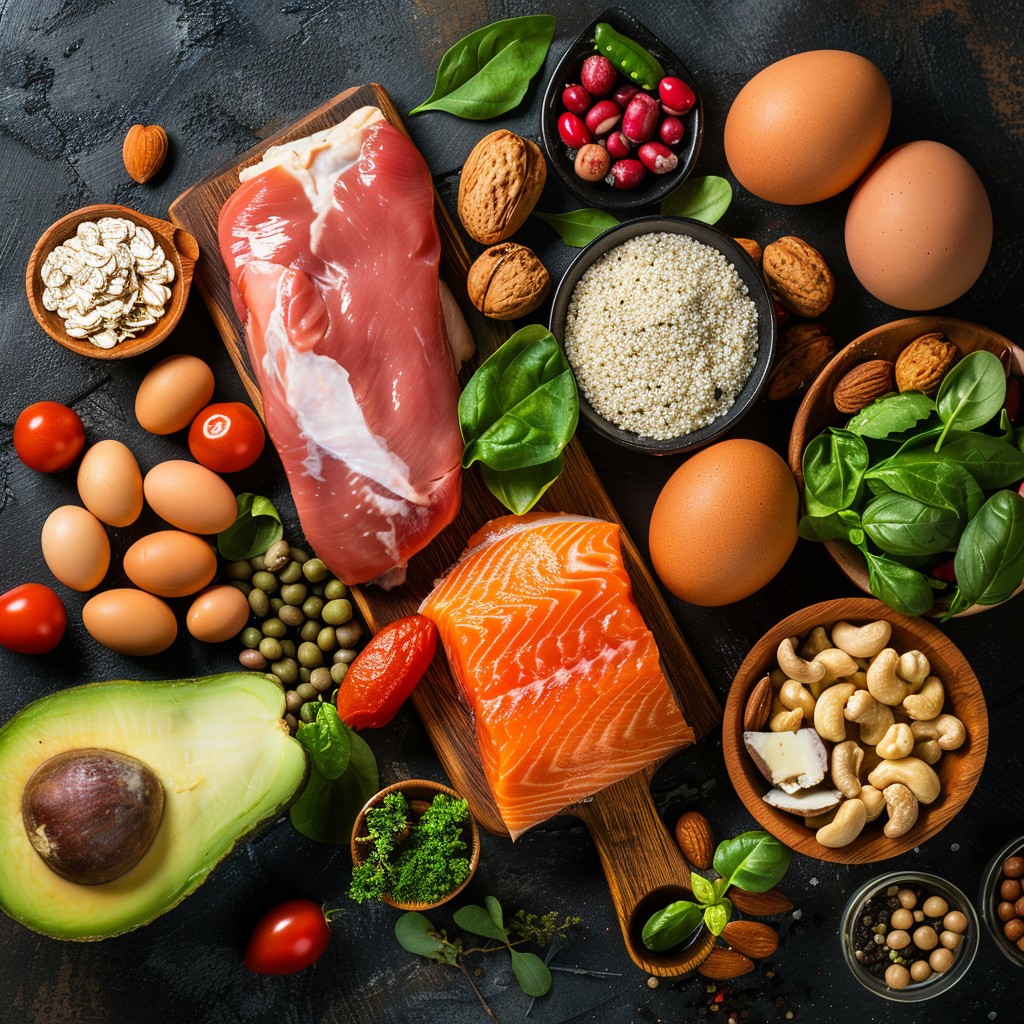Your body gets its energy and essential amino acids from the synthesis and breakdown of proteins, which removes old or damaged proteins and builds new ones to keep you healthy. Essential amino acids must be obtained from food, and animal proteins such as meat and eggs are the most efficient sources.
The body is constantly synthesizing and breaking down proteins. Protein synthesis is the process of linking amino acids together to make long chains, and there are more than 20 different amino acids that are used in protein synthesis in the body. In protein synthesis, amino acids are combined in a specific order according to the information contained in the DNA sequence. This is where mRNA, which carries the information in the DNA, tRNA, which carries the amino acids, and ribosomes come into play. The ribosome reads the codons in the mRNA and assembles the amino acids in the tRNA in the correct order to form a protein. This process is an essential biochemical mechanism for life and is fundamental to the structure and function of cells.
Proteolysis is the process of breaking the bonds between amino acids to separate them into individual amino acids. Protein breakdown in the body prevents the accumulation of old or damaged proteins and replenishes the body’s energy and glucose reserves. Proteolysis, the breakdown of proteins by enzyme complexes called proteasomes, occurs within the cell. The proteasome breaks down proteins into amino acids that are bound to a certain amount of a substance called ubiquitin. About 75% of the amino acids produced by protein breakdown are used to synthesize other proteins, and the rest are broken down. When amino acids are broken down, the amino groups are separated from the amino acids and turned into ammonia, which is then synthesized into urea and excreted from the body. The remaining amino groups are used to produce energy or glucose when there is a shortage of these, otherwise they are synthesized into fatty acids or excreted from the body.
Despite the constant breakdown of protein, the total amount of protein in the body can be maintained or even increased because protein synthesis is constantly occurring within cells. The amino acids needed for protein synthesis are synthesized within cells, obtained from dietary protein, or produced during the breakdown of proteins in the body. The amino acids required for protein synthesis that the body cannot synthesize and therefore cannot meet its own needs are called essential amino acids. The proportion of each essential amino acid required for the synthesis of any given protein is fixed. Essential amino acids produced through the breakdown of proteins in the body can also be used to synthesize proteins, but if they are not supplied from outside the body, the overall amount of protein synthesis will decrease. Therefore, essential amino acids must be consumed through food. However, unlike adults, essential amino acids also include amino acids that can be synthesized by the body, but in such small amounts that they must be supplemented with food.

The amount of essential amino acids in each food varies, and the more balanced the essential amino acids, the higher the percentage of the total amount of essential amino acids supplied that can be utilized for protein synthesis, i.e., the higher the utilization efficiency of essential amino acids. In general, animal proteins such as meat and eggs contain a balance of essential amino acids and have a high efficiency of essential amino acid utilization, while plant proteins such as rice and legumes have limited amino acids and have a relatively low efficiency of essential amino acid utilization. For this reason, it is important for people who consume mostly plant-based proteins to eat a variety of foods to balance their essential amino acid intake. For example, eating rice and soybeans together can complement each other’s limited amino acids and increase the overall efficiency of protein synthesis.
A limiting amino acid is an essential amino acid that has the lowest ratio of the amount of that essential amino acid in any food source compared to the amount of each essential amino acid required for protein synthesis. For example, to synthesize 1 mole of a hypothetical P protein, 2 moles and 1 mole of essential amino acids A and B, respectively, are required. If two moles of A and two moles of B are supplied to synthesize two moles of P, A will be two moles short of the required amount, and only one mole of P will be synthesized. This makes A the limiting amino acid because the lack of A limits the amount of protein that can be synthesized. Understanding these principles will help you evaluate the nutritional value of protein and balance your diet.
In addition, the latest research on protein intake shows that the type of protein you consume and when you consume it can also affect the efficiency of protein synthesis. Some studies have shown that protein is more effective for muscle synthesis when consumed immediately after exercise, which is important information for athletes and those looking to increase muscle mass. Adequate protein intake is important not only for maintaining good health, but also for increasing stamina and boosting immune function.
The synthesis and breakdown of proteins in the body is more than just a way to provide energy and nutrients, it is an essential process for life and health. Therefore, proper protein intake and a balanced diet are important factors that are directly related to our health. With this understanding, we can lead healthier lives.
 I’m a blog writer. I want to write articles that touch people’s hearts. I love Coca-Cola, coffee, reading and traveling. I hope you find happiness through my writing.
I’m a blog writer. I want to write articles that touch people’s hearts. I love Coca-Cola, coffee, reading and traveling. I hope you find happiness through my writing.